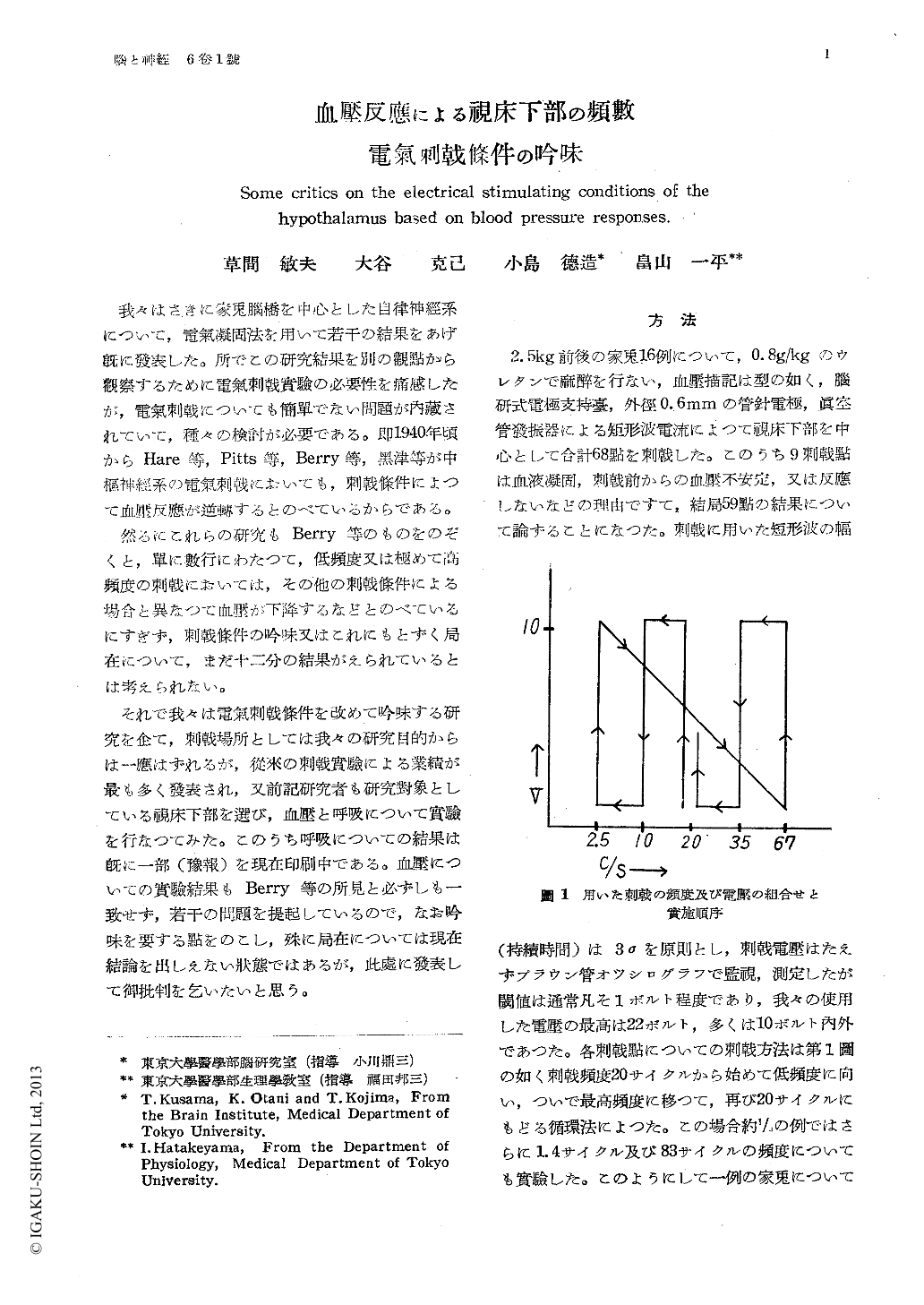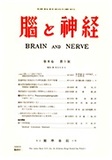Japanese
English
- 有料閲覧
- Abstract 文献概要
- 1ページ目 Look Inside
我々はさきに家兎腦橋を中心とした自律神經系について,電氣凝固法を用いて若干の結果をあげ既に發表した。所でこの研究結果を別の觀點から觀察するために電氣刺戟實驗の必要性を痛感したが,電氣刺戟についても簡單でない問題が内藏されていて,種々の検討が必要である。即1940年頃からHare等,Pitts等,Berry等,黑津等が中樞神經系の電氣刺戟においても,刺戟條件によつて血壓反應が逆轉するとのべているからである。
然るにこれらの研究もBerry等のものをのぞくと,單に數行にわたつて,低頻度又は極めて高頻度の刺戟においては,その他の刺戟條件による場合と異なつて血壓が下降するなどとのべているにすぎず,刺戟條件の吟味又はこれにもとずく局在について,まだ十二分の結果がえられているとは考えられない。
In experiments on the blood pressure res-ponses to electrical stimulations of the central nervous system, several authors have mentioned the occurance of changes in the directicn of blood pressure responses caused by different frequency of the stimulation.
It means that these experiments have in themselves much more complicated factors than commonly thought. Most of authors, however, excepting Berry and his collaborators, have ex-plained the fact merely such that the blood pressure falls by very high and very low fre-quent stimulations and rises in other ondi-tions.
We stimulated each 4 points in average in hypothalamus and preoptic region of 16 rabbits, anesthetizing with urethane and using the squ-are wave of 3 σ wide of constant from multi-vibrator by means as shown in Fig. 1.
When the frequency of stimulation was at the rate of 20 per second for the second time,namely, after stimulating a single point through a series of the stimulation shown in Fig. 1, we encountered in general the blood pressure res-ponses qualitatively the same as we had seen at the rate of 20 per second at the first time.
The stimulated points were divided in our cases in the following 3 groups. The first group is made of the points where the blood pressure fell during the stimulation. These points further classified in 4 types, three of them may correspond to the types reported by Berry et al. But in the remaining one type not mentioned by them the blood pressure fell, as shown in Fig. 3, B, at low voltages and with-out any special critical frequency at the rate between 2.5 and 67 per second. This type occured most frequently in our experiments. At the present stage, however, these 4 types cannot be assumed as essentially different be-tween them, because the fall of blood pressure is apt to be overlooked. The second group contains the points, at which the blood pre-ssure fell only as after-effect, but not during the stimulation. This is probably to be re-garded as the results of stimulating the ele-ment of bl od pressure falls, but not as a pendulum phenomenon, because as shown in Fig. 4, they are not elicited at rather high vol-tages, accordingly at rather marked rises of the blood pressure. The third group comprises the points, where the lowering of blood pres-sur ecould be found neither as after-effect nor during stimulation.
In Fig. 5 the stimulated points are plotted according to the kinds of the responses.
Our opinion is that we have sufficiently to examine the stimulating conditions in the physiological experiments of the central ner-vous system, especially when we wish to deter-mine the localisation of sympathetic and para-sympathetic centers.

Copyright © 1954, Igaku-Shoin Ltd. All rights reserved.


